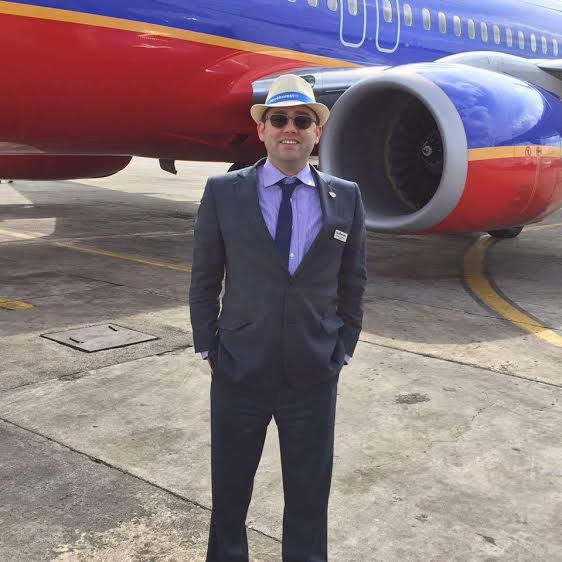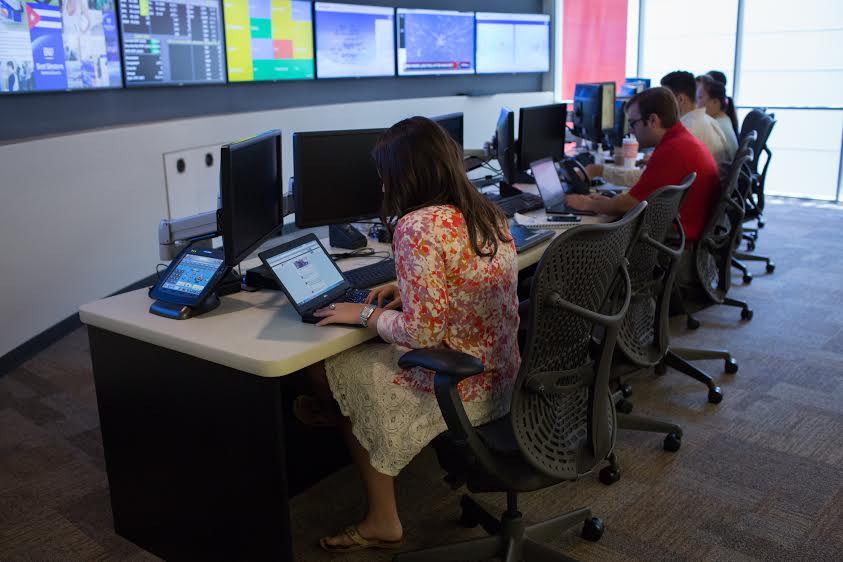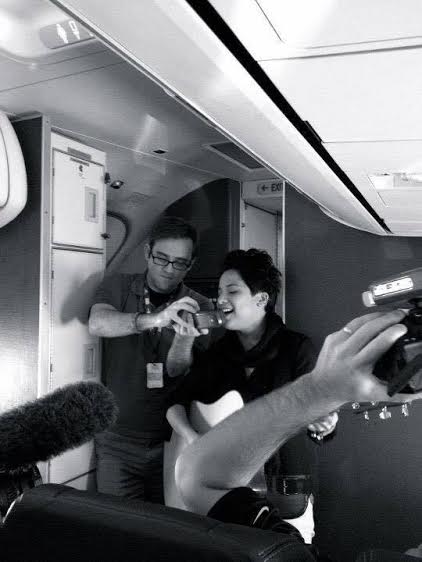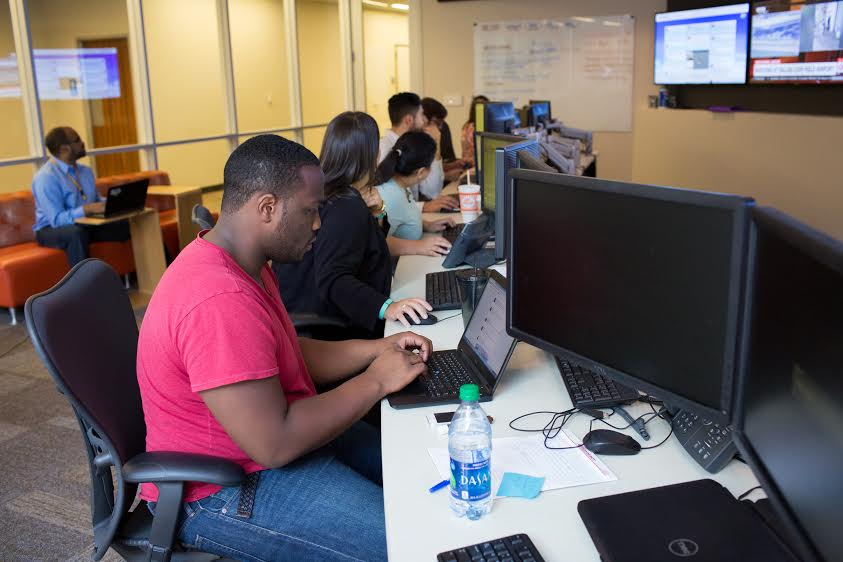As is true so often in life, it takes a village. And often in our workplaces, collaboration as a team is key to project success. The great thing about teamwork is that it allows us to fill in weakness with strength, as everyone brings something important and helpful to the table.
We love the teamwork approach that Southwest Airlines has adopted. The Southwest Social Business Team tackles everything from content creation and placement to customer service from a collaboration approach, and it’s clear this system is working for them!
To learn more, we heard from the experts and talked with team member Brooks Thomas, Southwest Airlines’ social business advisor, who shared with us his thoughts on working as a team, storytelling and live broadcasting.
 Dish Works: How many team members make up your team? Are they all responsible for content creation for Southwest Airlines?
Dish Works: How many team members make up your team? Are they all responsible for content creation for Southwest Airlines?
Brooks Thomas: The Southwest Social Business Team is comprised of nine team members. We operate a hub-and-spoke model that aims to integrate digital and social practices and programs throughout Southwest Airlines. The team has a significant hand in content creation and placement, but ours is mostly a facilitation role—connecting the right people, asking the right questions and teaching the rest of the company to fish on social. Every employee at Southwest Airlines should feel empowered to tell his or her story, and one of our main missions is to create an environment where that is possible, natural and nurtured.
You are a brand that is leading the travel industry with remarkable storytelling. What does storytelling mean to you as a brand? What stories do you hope to tell, and how do you determine what those stories are?
Every seat has a story, whether it’s occupied by a customer or an employee. Stories from the heart are our bread and butter, but we’re increasingly interested in providing stories for individuals at the time when they are most useful to each individual customer. In effect, it’s not what stories we hope to tell, but where we hope to tell them, and that’s all about knowing more about each customer and pairing the experience with the right story according to where they are in their respective journey.
Capturing the story. Most people don’t realize the work that goes into putting a story into a visual format for viewers. What is involved for your team once you identify a story to tell (video, articles, photos)?
Many stories begin as seeds that arrive in a state that is far simpler than the end product. An example, if you will: recently we told a story about a little girl named Lilly, the daughter of an employee who challenged her dad to find women on the ramp. The little girl was convinced that women didn’t hold positions throwing bags into our aircraft. Will Santiago (the girl’s father) took to an internal Facebook group to ask women throughout Southwest Airlines to take selfies of themselves; within 24 hours, the post had more than 300 comments, most of them pictures. That’s already a great story, but our team coordinated internally, reached out to Will and organized a tour of BWI (Baltimore) for Will and his daughter. We sent one of our videographers from Visual Communications to capture Lilly’s adventure, where she was met by women working each position, every step of the way. That story ran in conjunction with International Women’s Day and ended up with more than a million views. We could’ve been satisfied with a repurposed photo album, but instead we pushed through to create a better experience for everyone involved. A lot of work goes into planning, calendaring and coordinating that content, which then needs to be storyboarded, shot and edited.

Is customer service a big part of online content engagement?
We are always mindful of how our content will affect customer service, but we also turn that lens around and examine what content can be crafted out of topic trends. What our customers are saying to us could be indicative of something we could better explain or of a previously unknown problem. Alternatively, creating a Wiki or database full of great content helps give our customer service a richer response, one that is mutually beneficial in that it also allows for fewer characters to be used if something can be explained in a video and linked to in a response.
What trends are you seeing for content marketing? Where do you see content marketing strategy going in the next few years? How do you think it will evolve?
We’d like to become a live broadcasting company. Not 24-hour news, but a company that puts out live, programmatic content on a schedule with broadcast quality. Virtual reality, augmented reality and 360-degree video seem to be a three-headed monster right now, and all three might play some type of role, but I think the ideology behind live programming is what’s more important than the medium at this point (hence why people still give their time to gritty video that has solid subject matter).
Planning. How much of your content do you plan in advance vs. run with in the moment?
We do a fair amount of both, but we recognize the need for agility in the social space while maintaining balance. We can’t fly off the cuff all the time and neither should we be overly planned. Strategically speaking, we want a north star and guidelines in which we should play, and we’re always refining that.
How do you determine what content is successful, what to do more of and what gets shared?
There are internal and external data points that we rely on, but there’s also the qualitative lens to keep in mind. Did it look like we wanted it to look? Did it make people feel how we wanted them to feel? There is more art than science to those questions, but a mantra we subscribe to is to let the data chart our course and let our heart lead the way.
 We focus on food, drink and destinations. Can you tell our readers if you see any content trends in any of those areas? As food is a trendy topic that goes hand-in-hand with almost any industry, how do you see it playing a part in the destination and travel industry?
We focus on food, drink and destinations. Can you tell our readers if you see any content trends in any of those areas? As food is a trendy topic that goes hand-in-hand with almost any industry, how do you see it playing a part in the destination and travel industry?
The trend is the volume and the need to stick out. Showcasing beautiful food and drinks amid picturesque settings is a dime a dozen these days, and it’s one reason Dish Works does so well—the uniqueness is in the personality and authenticity of it all. That’s a parallel we see in ourselves, by the way. We haven’t done a lot of destination content for fear of being like everyone else, but I think you’ll see that change, and in the simplest of ways: relying on our people, who have been there all along.
Any big brands that you’re crushing on that you think are doing a great job with content? If so, can you share which ones and what you love about them?
This one is very specific to me, and it’s not exactly a brand. Members of the Social Biz Team will roll their eyes, but I’m fascinated by the music artist That Poppy. What Island Records (or whoever is really behind the act) was able to construct from the ground up in this Warholian, J-Pop-borrowing experience is nothing less than remarkable. You can’t tell anything about That Poppy’s age or upbringing, and everything about her presence is uncannily sterile and sanitized, but woven with some pretty awful pop culture truths that are intentionally subtle. That Poppy has something of a cult following, and it’s mostly teenagers. That Island Records or Titanic Sinclair (the director behind the videos) was able to capture that audience’s attention is equally impressive.
Anything else you’d like to add that you think would be valuable to our readers?
I think the most fun we have as a team is in helping other areas of Southwest Airlines realize their true digital and social potential. Our boss, Lisa Goode (senior director of Social Biz), has been so good at opening our own team’s eyes to that fact, and we’ve gotten away from “just doing social media.” We’re building programs, exploring new revenue opportunities and helping Southwest Airlines set itself up for success in the coming years.
